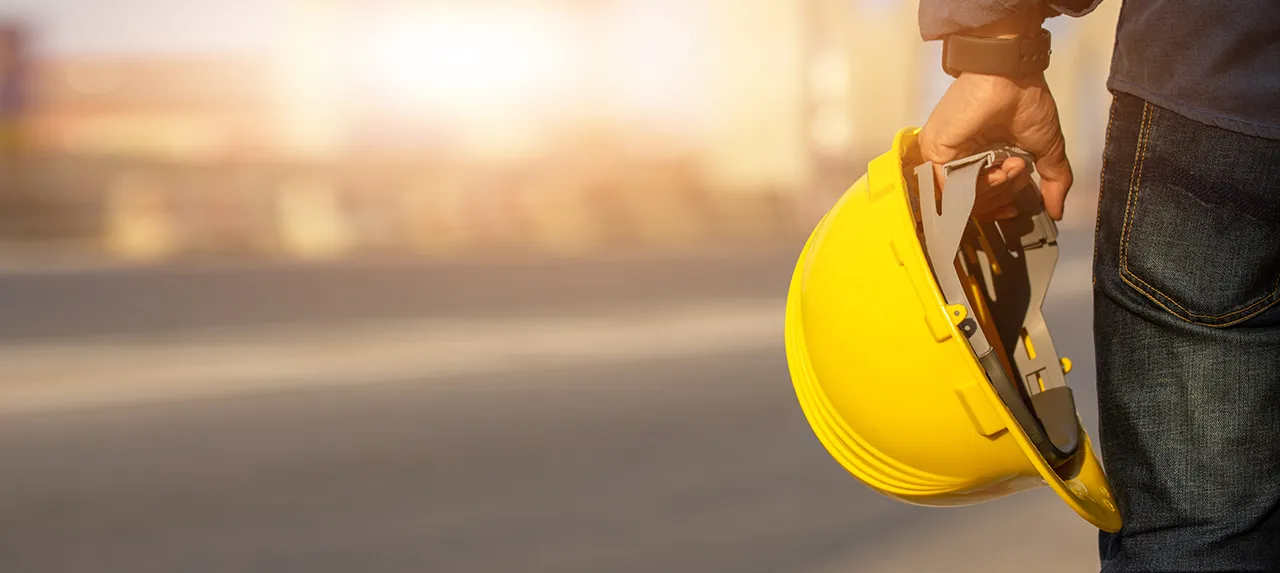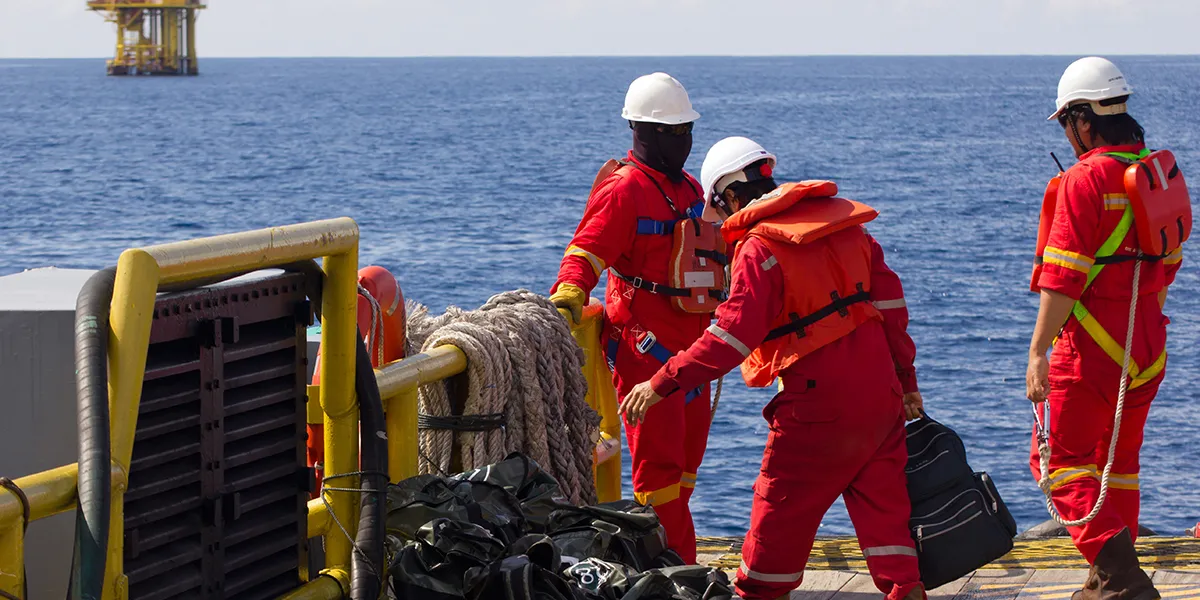Hard Hat Expiry: A Guide to Safety and Shelf Life

Head and brain injuries are more common than we’d like to believe, with life-changing consequences that not only affect the individual but those around them, too. In 2017 Eurostat reported that head injuries accounted for 21.9% of all fatal accidents. In the US, head-related incidents are a common occupational injury, with traumatic brain injuries accounting for 20–25% of work-related trauma. In the UK, the numbers are similar. However, according to a survey conducted by Headway, a UK-based brain injury association, head protection only accounts for 3% of personal protective equipment (PPE) purchases. Further research highlighted that organizations can spend £25 to £30 on a pair of safety boots but as little as £5 to £8 on a safety helmet. With such life-altering consequences that can happen in a split second, it’s important for organizations to invest in hard hat protection to keep their workers safe so that they can return home after each shift. While it can be a minefield searching for the right hard hat, what do you do once you have it? When PPE is purchased, it often includes care instructions like how many times you should wear earbuds before disposing; the same applies to hard hats. It’s important to understand that hard hats have a shelf life, too. While the first step to preventing head injuries can be having the right PPE, it is important to ensure it is maintained and replaced in order to continue providing protection. Here, we provide a guide to addressing these issues.
The importance of hard hat expiry
Understanding hard hat expiration dates
How to check for hard hat expiry
Factors that affect hard hat lifespan
OSHA standards and regulations on hard hat expiry
The role of hard hats in protection against falling or flying objects
Common myths and misconceptions about hard hat expiration
Steps to take when your hard hat expires
Conclusion: Ensure safety with regular hard hat expiry checks
What is a hard hat?
A hard hat is a protective helmet designed to shield the wearer from head injuries in the workplace. Hard hats are most synonymous in construction; however, they’re also worn by workers in mining, utilities and more. Hard hats reduce the amount of force to the head if impact is to occur from falling objects, debris, electric shocks, and acts as a barrier to protect the head. Today, most hard hats are manufactured from high-density polyethylene (HDPE). HDPE is one of the best plastics available for strength, durability and environmental flexibility. However, as technology evolves, with the ability to put more innovation into manipulating materials, a range of other materials is likely now being used too. Regardless of the hard hat selected, it is imperative it meets PPE regulations.
The importance of hard hat expiry
Hard hats protect the wearer’s head and minimize the risk of brain injury in case of an accident: they can save lives. In the US, the Occupational Safety and Health Administration (OSHA) requires all hard hats to comply with the ANSI/ISEA Z89.1 standard for Industrial Head Protection. However, it is not as clear and doesn’t explicitly state anything about hard hat expiration. That said, as PPE, hard hats do fall under OSHA’s General Duty Clause. This requires that employers provide and mandate the use of reliable, properly functioning PPE. If the PPE is defective or damaged, employers are required to replace it. While supplying PPE is the first step to keeping employees safe, it is just as important to ensure that any expiration dates are highlighted and the equipment is replaced as needed. Safety first, always.
Understanding hard hat expiration dates
While expiration dates are more commonly associated with food, hard hats have an expiry date, too, which can also be known as its ‘born-on’ date or manufactured date. As the name implies, this is the date indicating when the helmet was made, not first use. Identifying the expiration date is important as materials can degrade over time. As a general guide, hard hats that have not received any damage during service should be replaced after two to five years; however, the time span can be affected by other factors such as the environment, chemical exposure and use. These factors can significantly deplete the lifespan of the product so it is extremely important that users diligently inspect the hard hat regularly for damage before using. During inspection, look for cracks, dents or signs of wear and tear. If any of these are found, safety should never be compromised and the hard hat should be replaced. This is the responsibility of both the organization and the user to ensure that the manufacturer’s guidelines are followed and replacement recommendations are adhered to.
How to check for hard hat expiry
The manufacture date can be located inside the hard hat, stamped below the brim. Most manufacturers use a date wheel to represent this. The number in the center indicates the year of manufacture while the arrow to the number will highlight the month it was produced. Once this is identified, a calculation can be made by adding two to five years to the year marked to determine the expiry date. Two to five years is a general guide for the lifespan of hard hats so it is important to review the manufacturer’s recommended lifespan and apply accordingly, as this can vary. If the user is ever unsure about the hard hat expiry, it’s always better to be safe than sorry when protecting the head and one of our most important organs. Safety is the top priority.
Factors that affect hard hat lifespan
Checking and making note of the expiration date of your hard hat is important to ensure maximum protection; however, many other factors can affect the lifespan of your important piece of PPE and should not be overlooked. As with most products, exposure to sunlight can weaken and degrade the materials the hard hat is manufactured from, just as excessive cold exposure can, too. Extreme heat and cold damages the hard hat, rendering it ineffective to protect against impact. Chemicals and abrasive substances cause wear. Hard hats that have faced impacts from falls or objects also have a reduced lifespan. If a hard hat has sustained impact, even if no visible damage can be identified, it’s important to replace it immediately. Hard hats are designed to protect the head. Once impact is made, the materials may be weakened and may no longer be able to endure the impact and resist penetration from foreign objects.
When not in use, it’s important to store the hard hat correctly, as improper storage can lead to premature aging. Store in a cool, dry place when not in use and ensure it is cleaned regularly with soap and water. This will help remove any dirt, dust or other contaminants that could damage and reduce the lifespan of your hard hat. The frequency of use and exposure to external environments will also accelerate wear and tear. If the hard hat no longer provides a secure and tight fit, its suspension may need to be replaced. If this is not possible, replace the hard hat completely to ensure maximum security and protection.
Always follow the manufacturer’s care instructions. Safety standards ensure optimal protection. Don’t wait for the expiration date to replace the hard hat if there are signs of damage or if it has already been exposed to impact – replace immediately.
OSHA standards and regulations on hard hat expiry
In the US, OSHA mandates hard hat use in hazardous environments where employees are at risk. It follows ANSI Z89.1 standards closely. These standards specify hard hat types. They also detail performance guidelines for safety. ANSI does not set expiry dates directly but OSHA expects compliance with manufacturer recommendations. Manufacturers determine the lifespan and expiry, which is, typically, around five years. Employers must ensure hard hats are compliant – damaged or expired hats must be replaced. Regular inspections are required for safety, and compliance ensures worker protection against head injuries.
The role of hard hats in protection against falling or flying objects
In the US, close to 18,000 construction workers were injured on the job by falling or flying objects. About a third of these workers were construction laborers. That means about 20 laborers were injured every day on the job by falling or flying objects. Hard hats provide a robust and rugged barrier against falling objects and are the first line of defense. Always be alert and ensure they are worn appropriately in designated areas that may be dangerous. It is important to follow the signs to comply with safety standards for maximum protection. Hard hats are designed to distribute the impact force evenly while absorbing shock to protect the skull. Where there is flying debris, it is deflected away from the head to reduce injuries. The suspension system inside a hard hat cushions any blows. Hard hats are an essential part of PPE in many hazardous environments. By protecting the head and reducing impact, they act as a barrier against potential concussion and prevent lifelong medical implications.
Common myths and misconceptions about hard hat expiration
There are many myths and misconceptions associated with hard hats, especially those surrounding expiration. Like most things, hard hats do not last forever. If there is no expiration date, this does not mean indefinite use. They are not indestructible, no matter how innovative materials and technology is getting. Minor cracks compromise safety. Painting your hard hat to customise and suit your own personal style is not harmless. Not all hard hats are made equal or offer the same level of protection.
Different hard hats are available for different uses. It’s important to find the right one that offers maximum protection for your workers. Myths and misconceptions overlook vital safety considerations. It’s important to inspect hard hats before and after use to ensure that safety is not compromised. Regularly check for any cracks, dents or other damage that could compromise the integrity of the hard hat. If you see any damage, do not use the hard hat and replace it immediately – do not wait for the expiration date to replace it. This is a guideline only. Remember, if the hard hat has come into contact with impact and no visible signs are present, it may still be compromised so replace it.
Steps to take when your hard hat expires
If the hard hat has expired or been compromised, stop using it immediately. Dispose of the expired hard hat properly; review the manufacturer’s guidelines for disposal methods. Arrange for a new hard hat and ensure the new one meets safety standards. Record the new hard hat’s manufacture date and mark the date of first use, too. Regularly inspect the new hard hat for damage, and replace parts as needed for maintenance. Ensure these steps are followed for maximum protection.
Conclusion: Ensure safety with regular hard hat expiry checks
The importance of hard hats in preventing life-altering head injuries cannot be overstated. While initial investment in quality head protection is essential, understanding and addressing hard hat expiration is equally critical. Hard hats have a designated lifespan, typically ranging from two to five years; however, this can vary based on factors like environmental exposure and usage patterns. Regular inspections for signs of wear and tear, coupled with adherence to manufacturer guidelines, are paramount in maintaining their effectiveness. It’s crucial for both employers and employees to prioritize safety by promptly replacing expired or damaged hard hats, regardless of the absence of visible defects. By following proper care and replacement protocols, the integrity of our protective equipment is upheld, and, more importantly, the well-being of those who depend on it in hazardous work environments is safeguarded. Remember, safety is not just a guideline – it’s a commitment to protecting what matters most: human lives.




